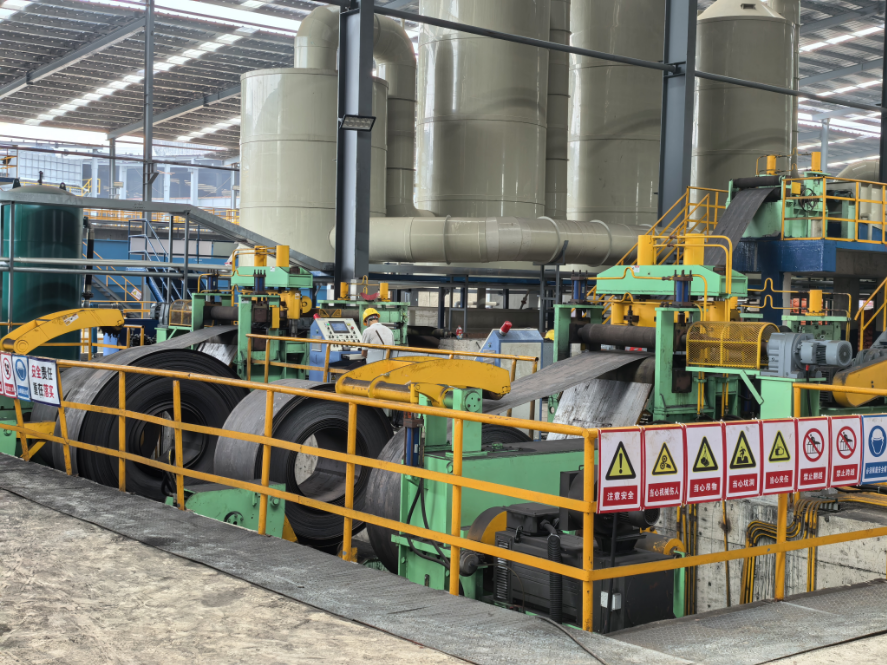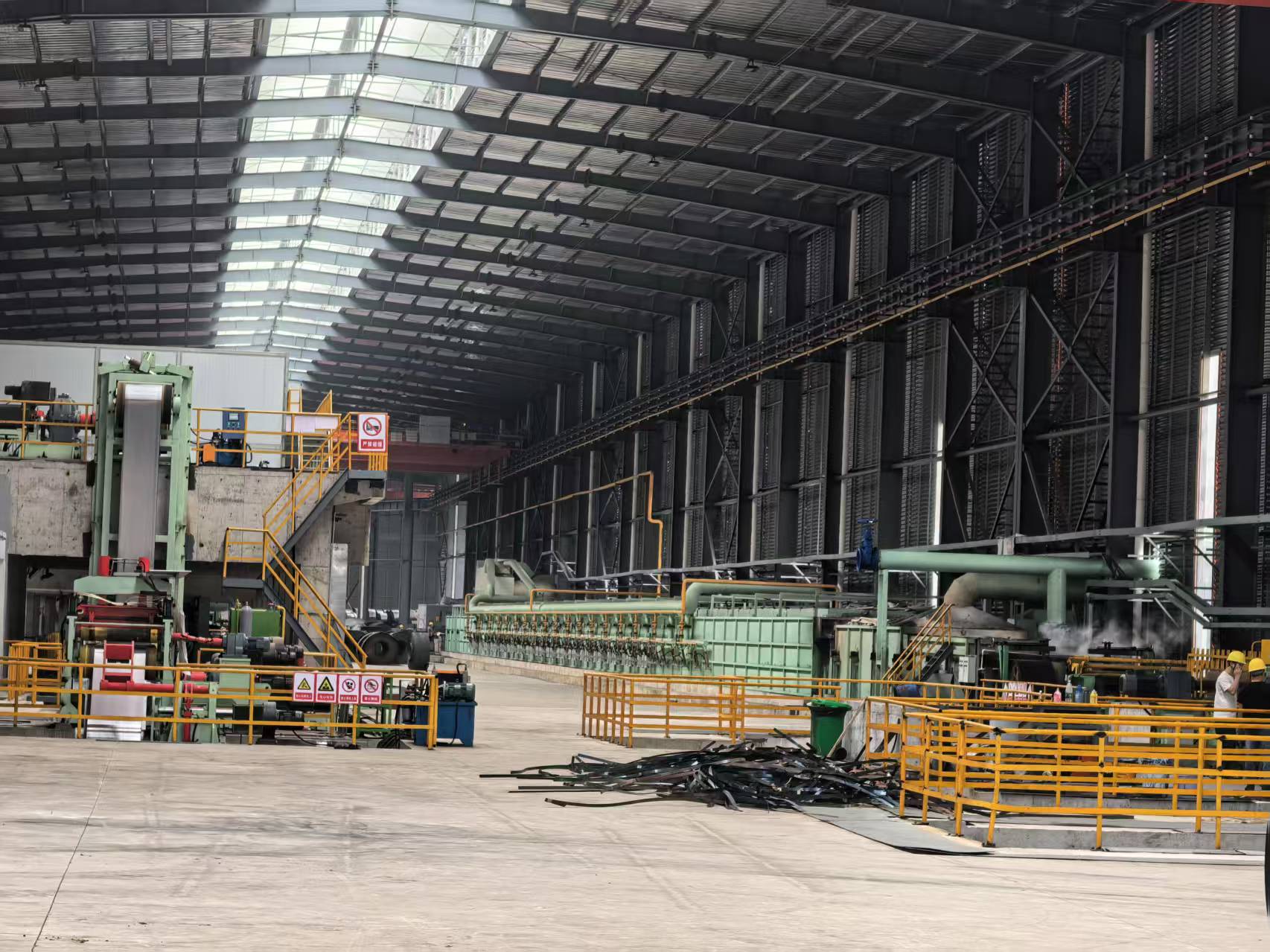What ls Pickling and Annealing Equipment and How Does It Work in Metal Processing?
Pickling equipment and Annealing equipment are very important in metal processing. Pickling equipment uses acid baths to clean metal surfaces. It removes rust, scale, and other dirt from the metal. Annealing equipment uses furnaces and heat to make metals softer. It also helps improve the metal’s structure. These machines help factories get better surface quality, strength, and durability. For example, using data to improve annealing has made more good metal and saved time. Prime yield went up by 5%. Processing time went down by 30%. Today, factories use both processes together for faster and better results.
|
Evaluation Method |
What It Measures |
Why It’s Important |
Implication of a Bad Result |
|
Hardness Testing |
Resistance to indentation |
Checks softness and uniformity |
Too hard: Incomplete anneal. |
|
Tensile Testing |
Strength and ductility |
Confirms strength specifications |
Low ductility: Cracking risk. |
|
Surface Inspection |
Color and absence of scale |
Ensures corrosion resistance |
Discoloration: Poor furnace control. |
Key Takeaways
- Pickling equipment uses acid baths to clean metal. It removes rust, scale, and dirt from the metal. This gets the metal ready for the next steps.
- Annealing equipment heats metal and then cools it slowly. This makes the metal softer and stronger. It also makes the metal easier to shape. The metal becomes better and lasts longer.
- Using pickling and annealing together helps make things faster. It saves energy and cuts down on waste. This helps factories work better.
- Modern lines use both processes with automation and sensors. This keeps the metal quality high. It also lowers mistakes and stops.
- Picking the right equipment and watching the process closely is important. It gives better metal surfaces and products that last longer. It also helps save money.

Pickling Line
Pickling Equipment and Annealing Equipment
What Is Pickling Equipment
Pickling equipment is important for cleaning metal. It uses acid baths to take off rust and dirt. Factories use special tanks that do not get damaged by acid. These tanks can heat up or cool down to keep the right temperature. Agitation systems help move the acid around the metal. Filtration systems take out solid waste. Ventilation systems remove dangerous fumes from the air.
- Operators set the acid strength, temperature, and how long the metal stays in the bath.
- Sensors and tools watch the process to keep it steady.
- Inhibitors help protect the metal and make it look better.
- Workers check and clean the equipment often to stop damage and breakdowns.
Pickling equipment and Annealing equipment are often used together in factories. This helps make the metal cleaner and ready for the next steps.
Note: Pickling equipment can clean many metals like carbon steel, stainless steel, copper, and aluminum. Each metal may need a different acid or inhibitor for the best results.
What Is Annealing Equipment
Annealing equipment changes metal by heating and cooling it in a careful way. This equipment has furnaces that get very hot. Operators use controls to heat the metal to the right temperature. The metal stays hot for a set time, then cools down slowly.
- The furnace heats the metal to a certain temperature, usually between 815°C and 900°C for steel.
- The metal stays at this temperature so its inside can change.
- The equipment cools the metal slowly to make it softer and easier to bend.
Annealing equipment makes metal easier to shape and less likely to break. It also takes away stress inside the metal and makes it tougher. Factories use this equipment for many metals, like steel, copper, brass, and aluminum.
Pickling equipment and Annealing equipment help process many types of metals. Steel, copper, aluminum, and their alloys all get better with these systems. When used together, they help factories make metals that are stronger, cleaner, and more reliable.
How It Works
Pickling Process Steps
Pickling takes off unwanted layers from metal surfaces. This process has several steps to make sure the metal is clean.
- Workers wash the metal with alkaline solutions first. This step gets rid of oils and grease.
- The metal goes into the pickling bath next. The bath has acids like hydrochloric acid, nitric acid, or hydrofluoric acid. The acid used depends on the type of metal.
- Sensors check the bath temperature every second. This keeps the process safe and steady.
- The acid reacts with the metal’s surface. It takes away rust, scale, and other dirt.
- Operators watch for heat changes. The reaction makes heat, so they track heat loss and heat made by the reaction.
- Sometimes, there are more than one bath. The first bath removes most of the scale. Later baths clean off any leftover dirt.
- The metal comes out and gets rinsed with water. This stops the acid from reacting more.
- The metal dries and moves to the next step.
Tip: The number of pickling steps and how strong the acid is can change how clean the metal gets. Keeping acid levels steady helps the process work well.
Annealing Process Steps
Annealing changes the metal’s inside to make it softer and less likely to break. This process uses heat and slow cooling.
- The metal goes into a furnace. Operators set the furnace to the right temperature for the metal.
- The furnace heats the metal up. For steel, this is between 815°C and 900°C.
- The metal stays hot for a certain time. This lets the inside of the metal change.
- The furnace cools the metal slowly. This makes the metal soft and easy to bend.
- Sensors watch the temperature during heating and cooling. This helps stop mistakes and keeps things safe.
- The metal leaves the furnace and is ready for the next step.
Keeping the right temperature during annealing helps stop cracks and makes the metal stronger.
Equipment Used
Pickling equipment and Annealing equipment use special machines for these steps.
- Pickling equipment has acid-resistant tanks, pumps, and ventilation systems. The tanks hold the acid and keep it at the right temperature. Pumps move the acid around the metal. Ventilation takes away harmful fumes.
- Annealing equipment uses furnaces with good temperature controls. These furnaces heat the metal evenly. Sensors and controllers help keep the temperature right.
- Both types of equipment use sensors to watch temperature and other changes. This data helps workers make quick changes if needed.
Pickling equipment and Annealing equipment are often used together in factories. They help make metals that are clean, strong, and ready for many uses.
Benefits in Metal Processing
Surface Quality
Pickling and annealing equipment help make metal surfaces smooth and clean. Pickling takes away rust, scale, and dirt. This leaves the metal shiny and without defects. Annealing makes the metal less brittle and fixes small flaws. Factories watch temperature and chemical baths closely. This helps them get an even finish. Clean metal is easier to paint, coat, or weld. A good surface means fewer problems later.
Corrosion Resistance
These processes help metals last longer by stopping corrosion. Pickling removes things that can cause rust or damage. Annealing changes the metal’s inside to make it stronger. It also helps stop weak spots from forming. Studies show that careful processing makes a strong oxide layer. This layer protects the metal from rust. For example, titanium and steel treated this way form tough barriers. These barriers keep out water and chemicals. This helps metal products last longer in tough places.
Mechanical Properties
Annealing and pickling do more than just clean metal. They also make it stronger and easier to bend. Annealing takes away stress inside the metal. It also makes the grain structure better. This helps the metal bend without breaking. It also makes the metal tougher and stronger. Some steels get much stronger after advanced processing. Pickling removes dirt that could make the metal weak. This gives factories good materials for hard jobs.
Efficiency
Modern pickling and annealing lines help factories work faster. They also help save money. Continuous systems keep quality high and cut waste. Production can go up by 20%. Energy use can drop by 10%. Some factories save 12% on costs after upgrades. These changes mean less downtime and fewer bad batches. Products get to customers faster. Over time, companies get their money back quickly and do better in the market.
Tip: Buying better pickling and annealing equipment helps make better products. It also cuts costs and makes factories work better.

Pickling and Annealing Equipment
Integrated Processing Lines
Process Flow
Modern metal factories use integrated processing lines. These lines have both pickling equipment and annealing equipment. Metal strips move through each step without stopping. First, pickling uses acid baths to clean the metal. Next, the metal goes right into the annealing furnace. This keeps the metal moving and means less handling.
Factories add many advanced features to these lines:
- Full automation makes things faster and cuts down on mistakes.
- Scrap handling and automatic entry keep the line working well.
- Stitching technology connects metal strips, so the process does not stop.
- Floating furnaces use hot air cushions to heat metal evenly.
- Water and air quenching help control how strong and flexible the metal is.
- Tension levelers stretch the metal to make it better quality.
- Automatic surface checks and temperature controls keep quality high.
- Online monitoring checks lubrication film thickness for better control.
These features help factories make better metal products. They also help factories work faster and have fewer problems.
Production Line Integration
Automation and smart scheduling are very important in these lines. Factories use AI-driven systems to plan every step. These systems change schedules quickly to avoid delays and downtime. The table below shows how automation helps key performance indicators:
AI and automation help factories handle hard orders and cut down on waste. Advanced algorithms also split lots and assign machines, which saves energy and makes things work better. With these technologies, factories can make more metal quickly and keep the quality high.
Pickling equipment and Annealing equipment help factories make metal that is clean and strong. These machines also help the metal last a long time. When used together, they make the surface better and save energy. They also help factories throw away less waste. Modern bright annealing uses less energy and does not make dangerous waste. The table below shows how much energy and waste can be saved. Picking the right equipment helps factories make better products and work faster.
Picking good equipment helps factories do better in the future.
FAQ
What metals can factories process with pickling and annealing equipment?
Factories use these machines for steel, stainless steel, copper, brass, and aluminum. These machines help make many metals stronger and smoother.
Why do manufacturers combine pickling and annealing in one line?
Doing both steps together saves time and energy. The metal goes from cleaning to heating without stopping. This makes things faster and helps make better products.
Is pickling dangerous for workers?
Pickling uses strong acids that can hurt people. Factories use special tanks and good ventilation to keep workers safe. Workers wear safety gear and get training. Equipment is checked often to stop accidents.
How does annealing change the metal?
Annealing heats metal and then cools it slowly. This makes the metal softer and easier to bend. It also takes away stress and helps stop cracks.
Can pickling and annealing reduce waste?
Yes. New machines use less acid and energy. Automated systems help control the process and lower mistakes. This means less waste and saves money.

